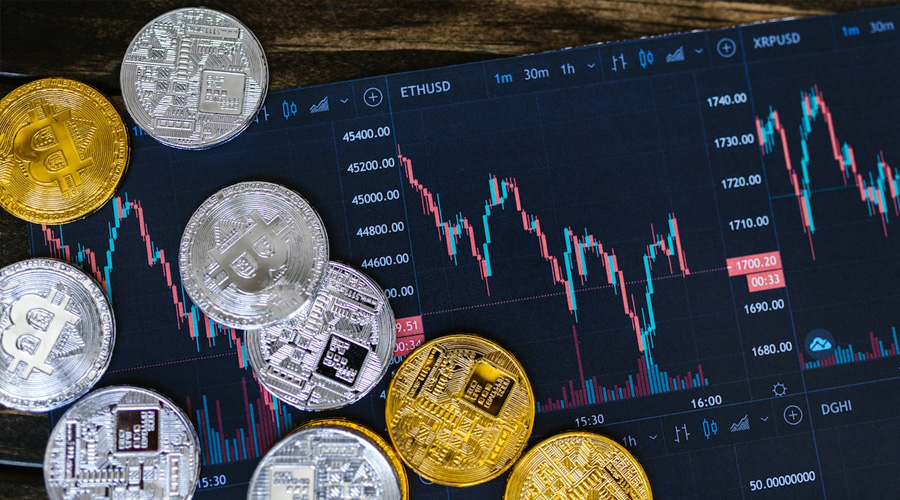Cryptocurrency trading can be a highly volatile and fast-paced market, making it challenging to identify trends and make informed decisions. However, one popular technical analysis tool that can assist traders in understanding market trends is moving averages. In this article, we will explore how moving averages can be utilized to analyze crypto trends, enabling traders to make more informed trading decisions.
What are Moving Averages?
Moving averages are calculated by taking the average price of an asset over a specific time period. This average is constantly recalculated as new price data becomes available, creating a line that moves along with the market. The primary purpose of a moving average is to filter out short-term price fluctuations and provide traders with a clearer picture of the overall trend.
Different Types of Moving Averages
There are several types of moving averages, but the three most commonly used in crypto trading are:
- Simple Moving Average (SMA): The SMA calculates the average price over a specified number of periods equally. Each price point holds the same weight in the calculation.
- Exponential Moving Average (EMA): The EMA places more emphasis on recent price data, making it more responsive to changes in price compared to the SMA. Traders often prefer the EMA for short-term analysis.
- Weighted Moving Average (WMA): The WMA assigns different weights to price data, with more weight given to recent prices. This type of moving average aims to reduce the lagging effect seen in the SMA.
It’s essential to understand the characteristics of each moving average type and select the one that aligns with your trading strategy and timeframe.
How Moving Averages are Used in Crypto Trading
Moving averages are versatile tools that offer several applications in crypto trading. Let’s explore some of the key ways traders utilize moving averages to analyze crypto trends effectively.
Identifying Trend Reversals
One of the primary uses of moving averages is to identify potential trend reversals. By observing the interaction between different moving averages or the relationship between the price and the moving average, traders can gauge the strength and direction of a trend. A crossover of two moving averages, such as the 50-day and 200-day moving averages, is often considered a significant signal for a trend reversal.
Determining Support and Resistance Levels
Moving averages can also help traders identify key support and resistance levels in the market. When the price approaches a moving average from below and bounces off it, the moving average can act as support. Conversely, when the price approaches from above and fails to break through the moving average, it can act as resistance. These levels can provide valuable insights into potential price reactions and areas of buying or selling interest.
Generating Trading Signals
Moving averages can generate trading signals based on the interaction between the price and the moving average line. For example, a buy signal is generated when the price crosses above the moving average, indicating a potential upward trend. Conversely, a sell signal is generated when the price crosses below the moving average, suggesting a potential downward trend. These signals can assist traders in timing their entry and exit points more effectively.
Setting Up Moving Averages on Crypto Charts
To effectively utilize moving averages in crypto trading, it’s crucial to set them up correctly on your charting platform. Here are some key considerations when configuring moving averages:
Choosing the Timeframe
The choice of timeframe depends on your trading style and strategy. Short-term traders may prefer shorter timeframes, such as 5-minute or 15-minute charts, while long-term traders may opt for daily or weekly charts. It’s essential to select a timeframe that aligns with your trading goals and objectives.
Selecting the Moving Average Periods
The selection of moving average periods determines the sensitivity and responsiveness of the moving average line. Shorter periods, such as 10 or 20, result in a more reactive moving average, while longer periods, such as 50 or 200, provide a smoother line. Experimentation and backtesting can help determine the most suitable moving average periods for your trading strategy.
Interpretation of Moving Averages
By observing the behavior of moving averages, traders can gain valuable insights into market trends and potential price movements. Here are some key aspects to consider when interpreting moving averages:
Bullish and Bearish Crossovers
A bullish crossover occurs when a shorter-term moving average, such as the 50-day moving average, crosses above a longer-term moving average, such as the 200-day moving average. This crossover is seen as a bullish signal, indicating a potential upward trend. Conversely, a bearish crossover occurs when a shorter-term moving average crosses below a longer-term moving average, signaling a potential downward trend.
Golden and Death Crosses
A golden cross refers to a bullish crossover where the 50-day moving average crosses above the 200-day moving average. This crossover is considered a strong bullish signal, often associated with a significant price rally. Conversely, a death cross occurs when the 50-day moving average crosses below the 200-day moving average, indicating a potential bearish trend.
Price Reactions to Moving Averages
Price reactions to moving averages can provide valuable insights into market sentiment and potential areas of support or resistance. When the price consistently bounces off a moving average, it indicates strong support or resistance. However, if the price repeatedly breaks through the moving average, it suggests a weakening support or resistance level.
Limitations of Moving Averages in Crypto Analysis
- Lagging Indicator: Moving averages are based on past price data, which means they are lagging indicators. They reflect historical price movements and may not provide timely signals in rapidly changing or volatile markets. Traders should be aware that moving averages may not capture sudden price reversals or quick market shifts.
- False Signals: Moving averages can generate false signals, particularly in choppy or ranging markets. During periods of consolidation, the price may frequently cross above or below the moving average, resulting in misleading signals. Traders should exercise caution and use additional confirmation indicators to filter out false signals and reduce the risk of making incorrect trading decisions.
- Sensitivity to Price Volatility: Moving averages may be less effective in highly volatile markets. Sharp price fluctuations can cause moving averages to whipsaw, where the price crosses above and below the moving average frequently. This can lead to confusion and result in incorrect trading signals. Traders should be mindful of market volatility and consider using other indicators alongside moving averages to enhance their analysis.
- Inability to Consider Fundamental Factors: Moving averages solely rely on price data and do not take into account fundamental factors that can impact cryptocurrency prices. Important events such as regulatory changes, news announcements, or technological advancements can significantly influence the market but are not reflected in moving averages. Traders should complement their technical analysis with fundamental analysis to gain a more comprehensive understanding of the market.
- Dependence on Historical Data: Moving averages are based on historical price data, and their effectiveness relies on the assumption that the future price movements will resemble the past. However, the cryptocurrency market is known for its dynamic and ever-changing nature, making it challenging to rely solely on historical patterns. Traders should be cautious and adapt their analysis to current market conditions rather than relying solely on historical moving average data.
Examples of Using Moving Averages in Crypto Analysis
Bitcoin (BTC) Analysis
When analyzing Bitcoin, traders often rely on moving averages to identify long-term trends and potential areas of support or resistance. The 50-day and 200-day moving averages are commonly used in Bitcoin analysis. A bullish crossover of these moving averages can signal a potential uptrend, while a bearish crossover can indicate a potential downtrend. Traders may also observe the price reactions to these moving averages for additional insights.
Ethereum (ETH) Analysis

In Ethereum analysis, traders utilize moving averages to identify short-term trends and potential entry or exit points. Moving average crossovers, such as the 10-day and 20-day moving averages, can generate trading signals for short-term price movements. Additionally, Ethereum’s price reactions to key moving averages, such as the 50-day or 100-day moving averages, can indicate areas of support or resistance.
Conclusion
Moving averages are powerful tools that can assist crypto traders in analyzing trends, identifying support and resistance levels, and generating trading signals. By understanding the different types of moving averages, setting them up correctly, and interpreting their behavior, traders can gain valuable insights into the market and improve their trading decisions. However, it’s important to consider the limitations, adapt to changing market conditions, and use moving averages in conjunction with other indicators for a well-rounded analysis. Remember to backtest strategies, practice risk management, and stay informed about market dynamics to maximize the effectiveness of moving averages in crypto trading.
FAQs
1. Can moving averages be used for short-term trading?
Yes, moving averages can be used for short-term trading. Traders can adjust the periods of the moving averages to align with their desired timeframe and trading strategy.
2. Are moving averages the only indicator needed for successful crypto trading?
No, moving averages are just one of many indicators used in crypto trading. It’s recommended to use them in conjunction with other technical indicators and fundamental analysis to make well-informed trading decisions.
3. How often should moving averages be updated?
Moving averages should be updated based on the trader’s chosen timeframe and market conditions. Regularly reviewing and adjusting moving average settings can help adapt to changing market dynamics.
4. Can moving averages predict future price movements accurately?
Moving averages are lagging indicators and cannot predict future price movements with certainty. They provide insights into past price trends and help traders make informed assumptions about potential future price movements.
5. Is it necessary to use all three types of moving averages (SMA, EMA, WMA)?
No, it’s not necessary to use all three types of moving averages. Traders can choose the type that aligns best with their trading strategy and preferences. Experimentation and backtesting can help determine the most suitable moving average type for individual traders.
